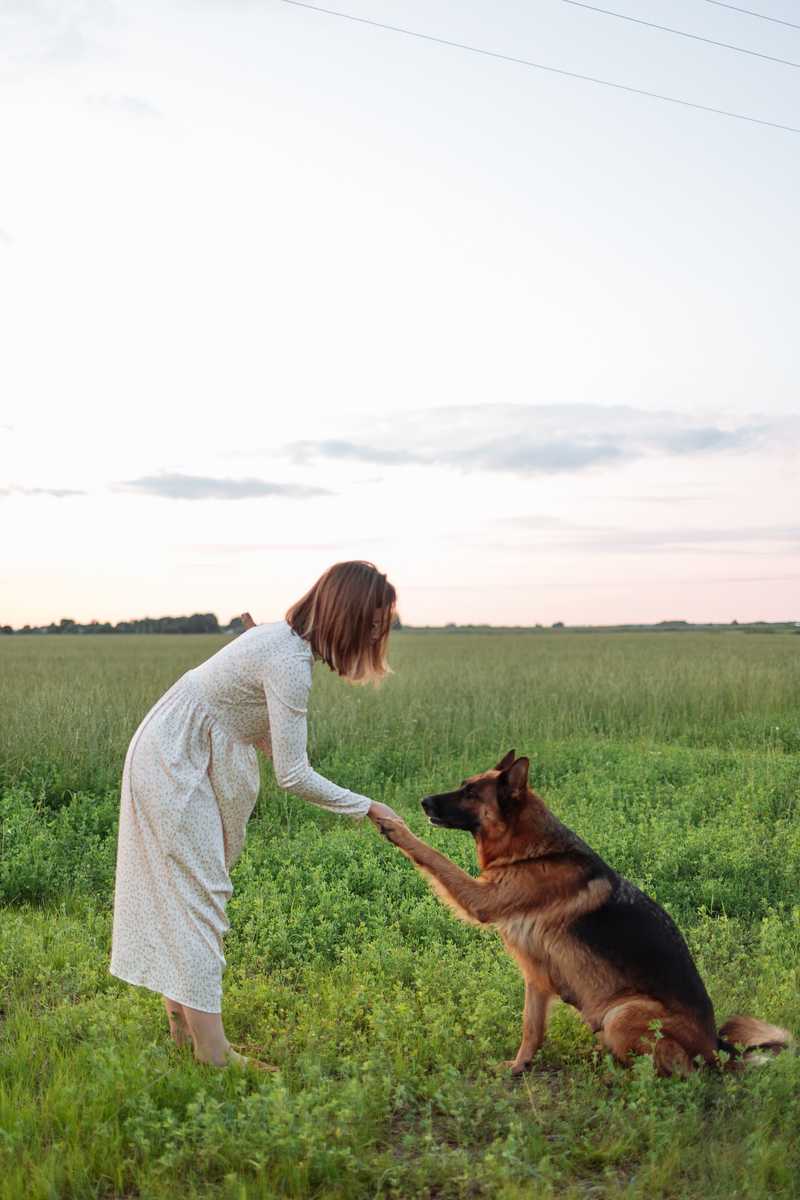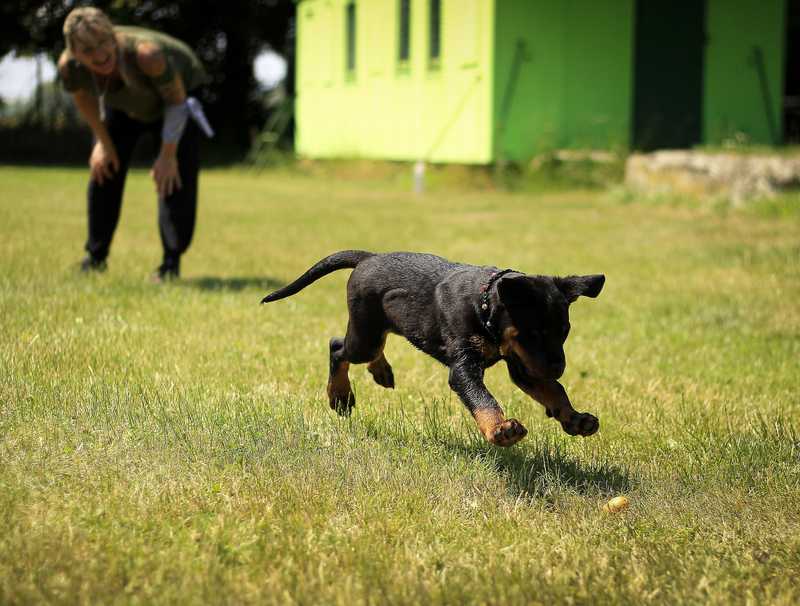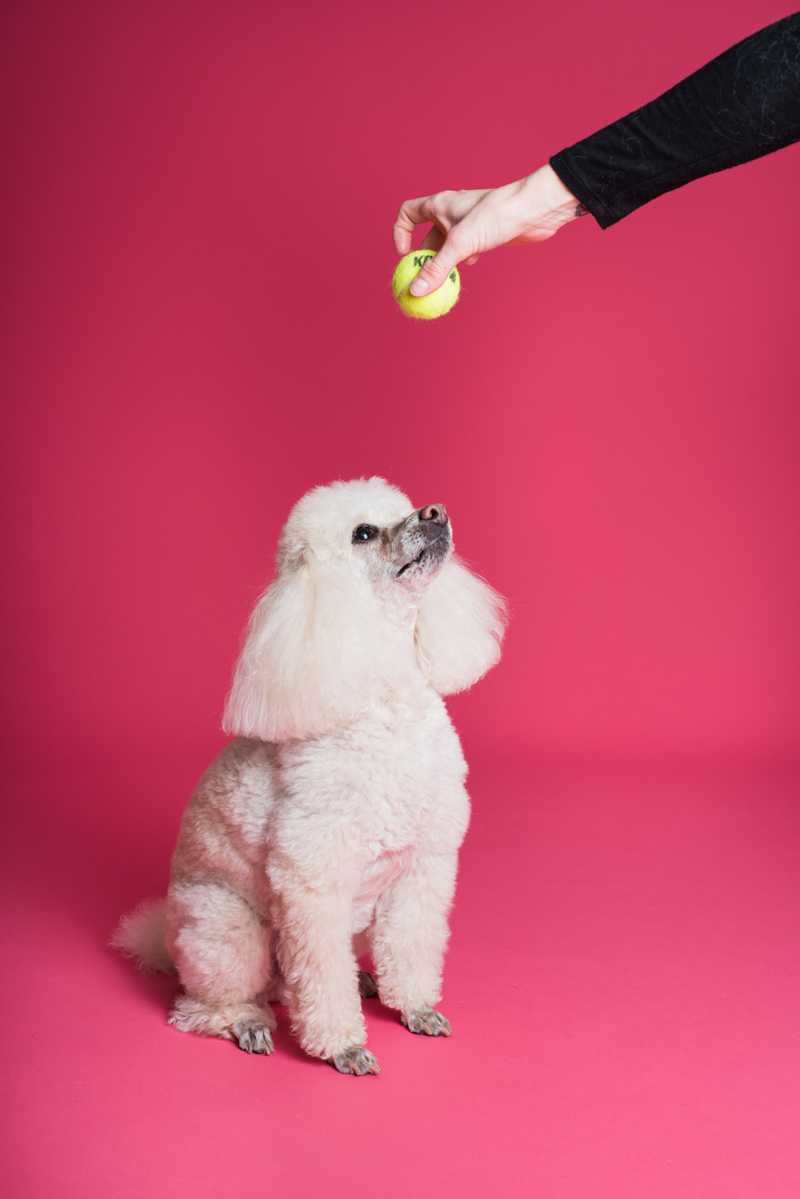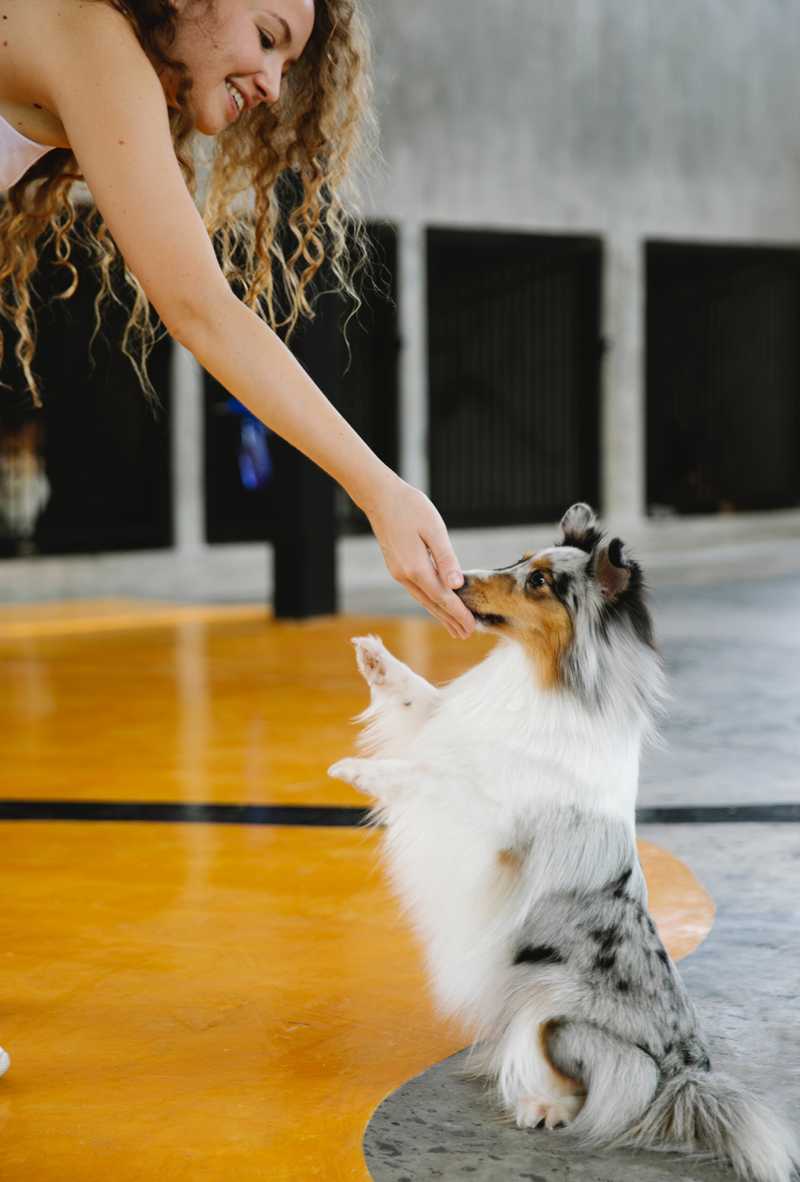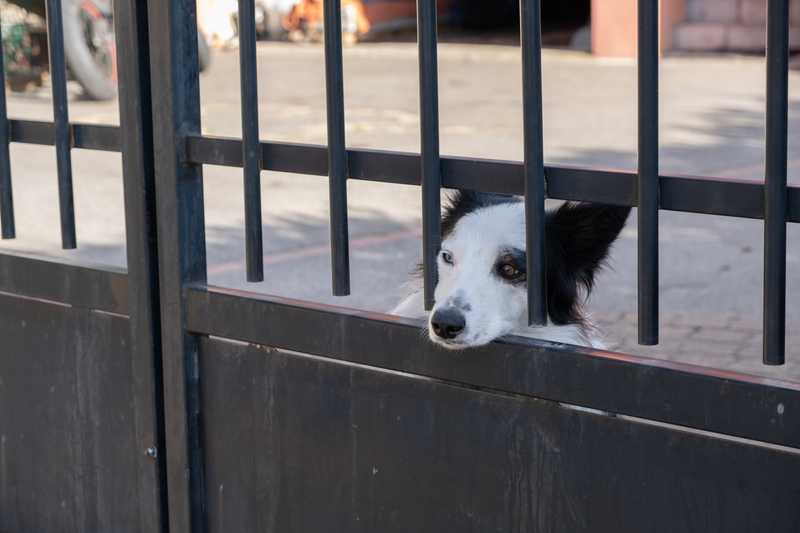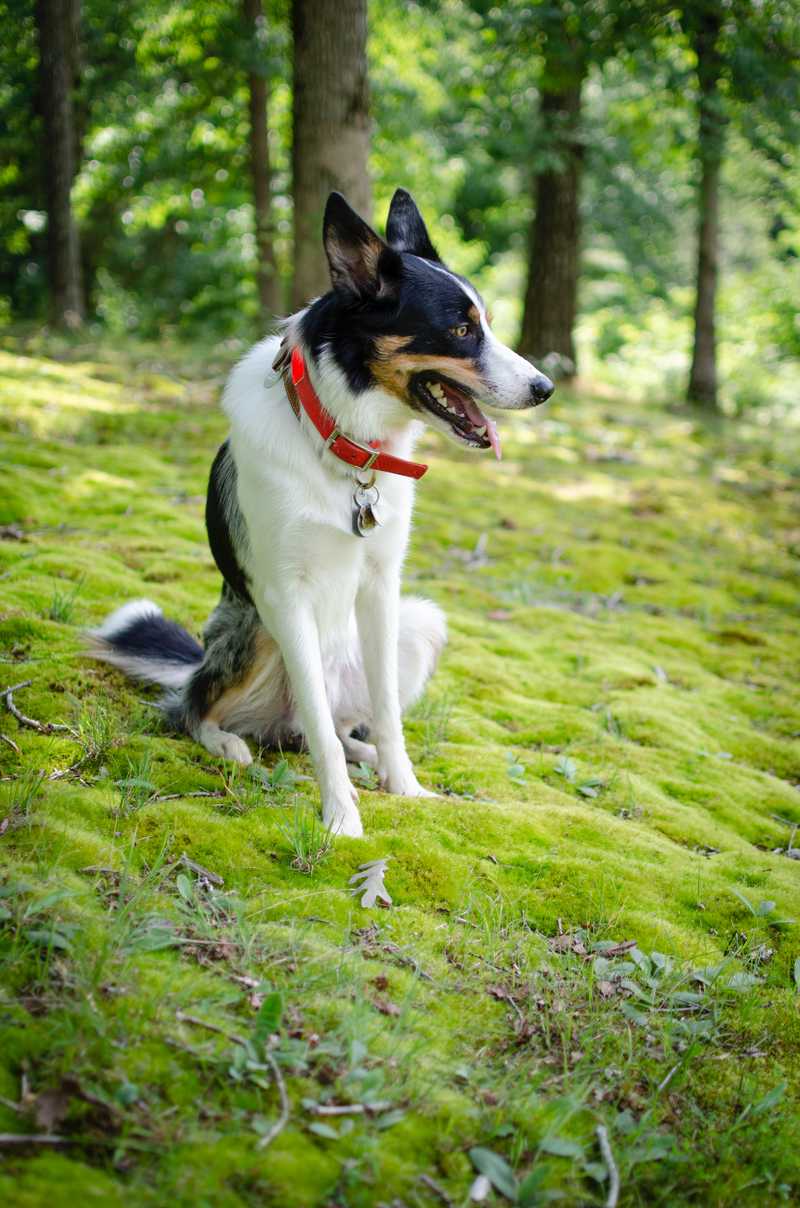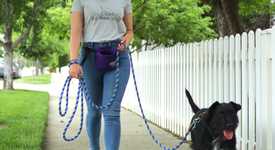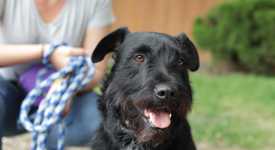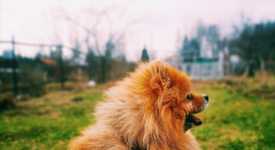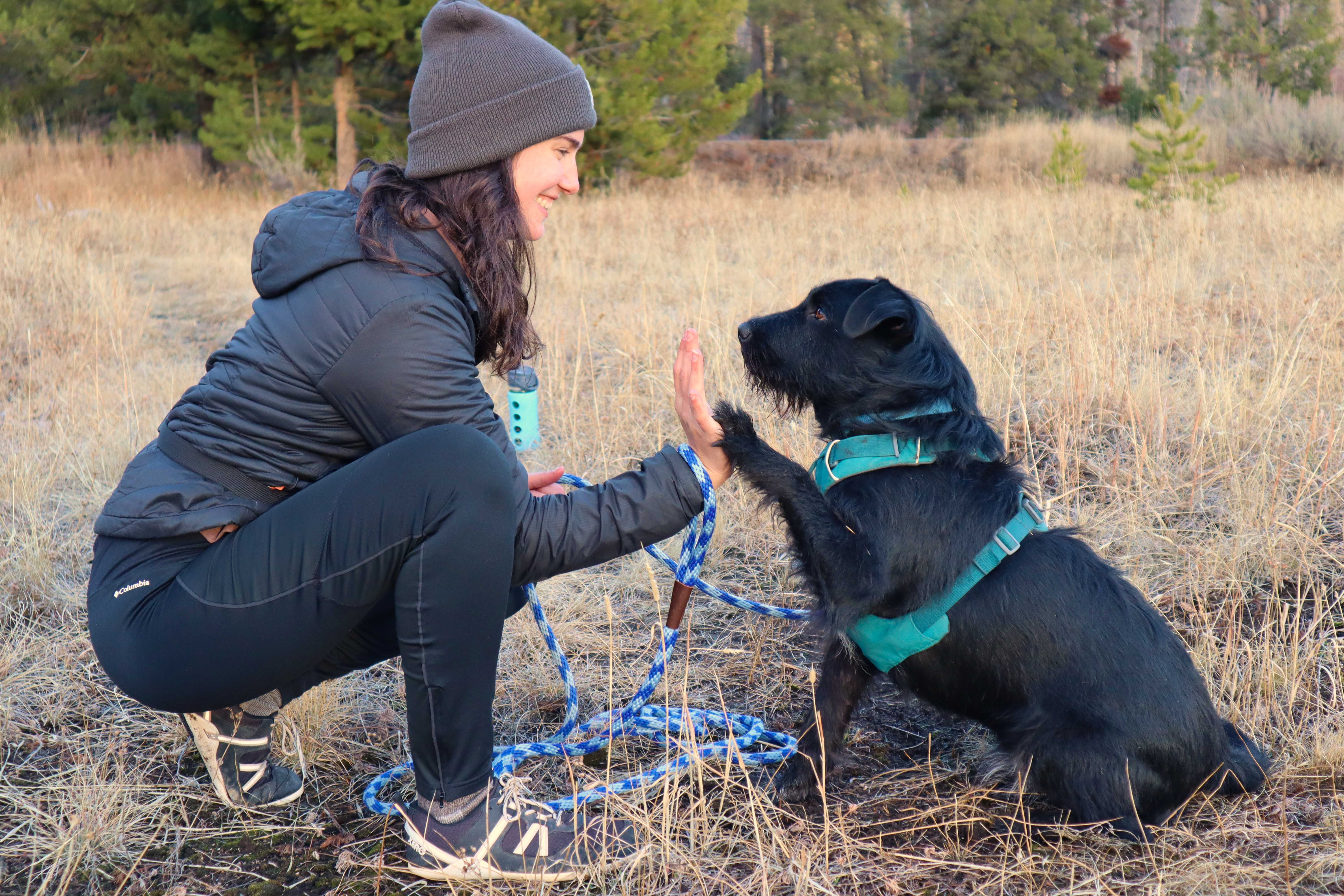How to Use Positive Reinforcement Techniques to Train Your Dog
Training tips | By: Taylor Wyllie, KPA CTP | Dec 16, 2022
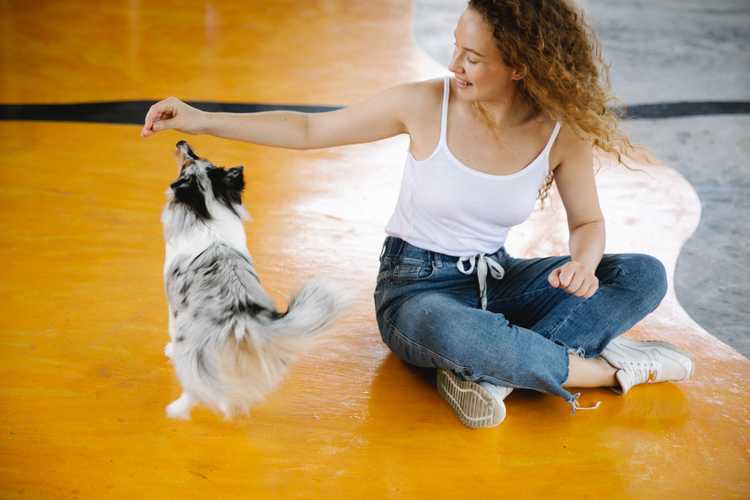
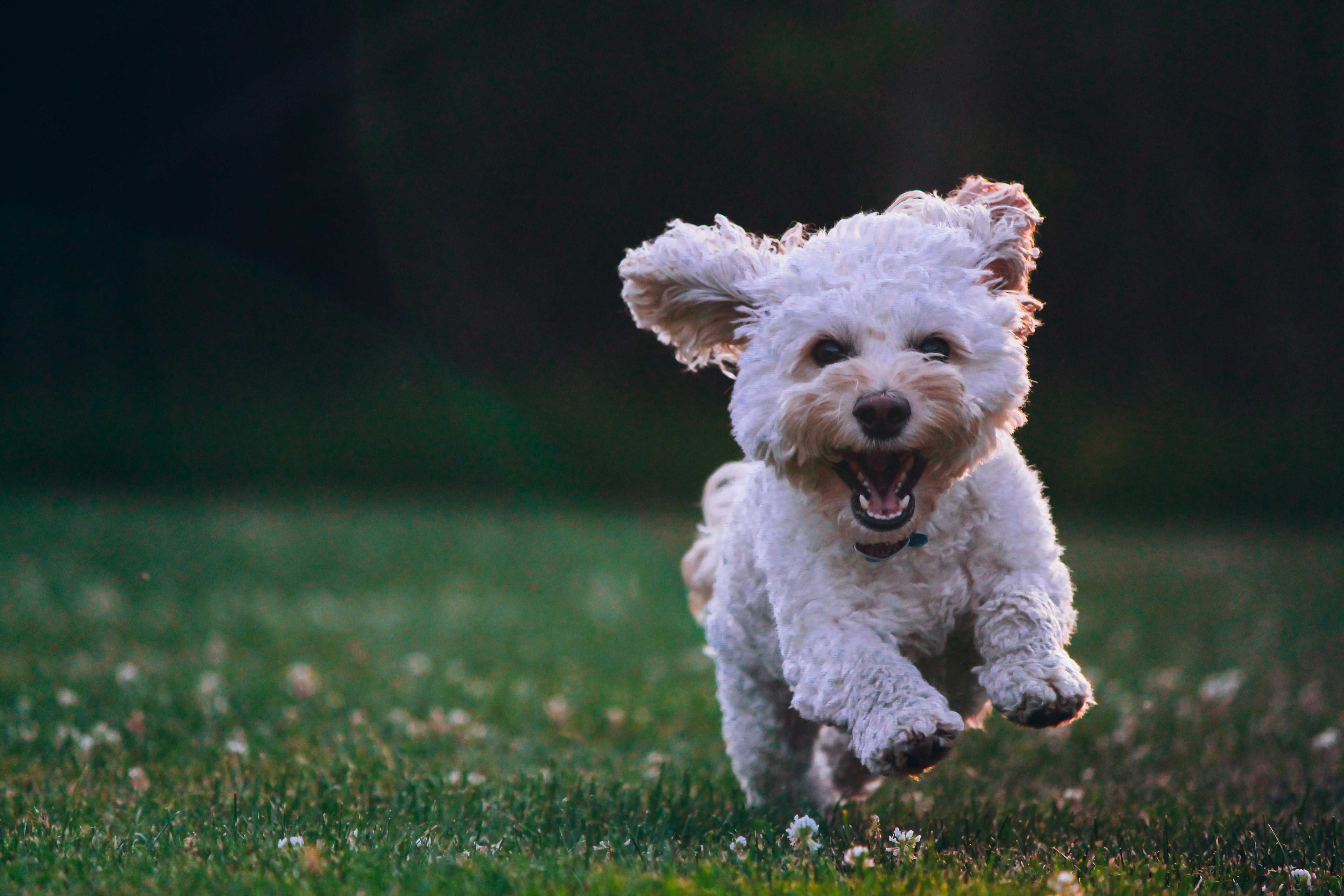
Unlock 10 Expert Puppy Training Tips!
Sign up with your email and receive a free video guide to transform your puppy into a well-behaved companion
If you’re new to positive reinforcement based training, welcome to the club (we have treats and fun t-shirts!). Or if you’ve been around the positive reinforcement block a few times, but want to brush up on your skills, welcome back!
On the surface, positive reinforcement based training is simple. It’s based on research that shows that all animals (humans too) are very likely to repeat a behavior that results in an enjoyable consequence. Or—in layman’s terms—animals are likely to repeat actions that lead to good things.
These enjoyable consequences or “good things” are called reinforcers in the training world.
When training using positive reinforcement, we reinforce behaviors that we want to be repeated. Behaviors may be actions like “sit,” “look at me,” “stay,” “down,” “leave it,” walking on a loose leash, and more.
So, basically, you:
- See a behavior you want
- Mark the behavior with a “yes” or a click (see tip #4)
- Reinforce the behavior with something your dog intrinsically desires (like a treat!)
If you want to dig a little bit deeper, here are 10 tips to help you train your dog using positive reinforcement based techniques:
1) Focus on what your dog does right
Positive reinforcement focuses on teaching your dog what to do, rather than what not to do. For example, instead of telling your dog not to jump on guests, you tell your dog to keep all four paws on the ground when greeting someone. (Or, if you want to be extra adorable, teach them to shake guests' hands.)
Frequently, when we tell a dog not to do something, they don’t know what they should be doing instead. This can cause dogs to become confused and frustrated and may lead to unwanted behaviors long-term. Or a feeling that your dog is being stubborn or spiteful or dumb. Really, they just don’t know what you want or aren’t being paid enough (see tip #3).
2) Keep it fun
Think about it: we may not speak the same language as our dogs, but we can understand each other all the same. That’s incredible. And there’s nothing better than watching your dog learn a new behavior or stop an unwanted one all because of the hard work you (and your dog!) have put in.
Plus, dogs are great at reading our body language. If we’re frustrated and showing our frustration with unconscious social signaling, like a sigh or frown, your dog is likely to notice and start stressing. And a stressed dog doesn’t learn well. If you find yourself getting frustrated, take a break and come back to training another time.
3) Find a reinforcer your dog loves
We use reinforcers because they increase the likelihood that your dog will offer that behavior again. If they get a treat every time they sit then they’re more likely to keep offering sits.
In society, we have the misconception that dogs just intrinsically want to please us. Studies—like a 2012 study in the Journal of the Experimental Analysis of Behavior—have shown us that this isn’t true. Dogs won’t just offer behaviors for free. So, pay them. And pay them well!
You should use a reinforcer that has a lot of value to your dog. Generally speaking, the more your dog likes the reinforcer, the smoother your training session will go.
What is valuable differs from dog to dog, so pay attention to what your dog likes. You can use treats, play (like tossing a ball), or something in the environment (like the opportunity to go sniff or say hi to their favorite person).
If you’re new to training, treats are effective, easy to use, and easy to get lots of repetitions in (the more repetitions, the faster your dog will learn a behavior). Just keep in mind that every dog has different taste preferences. Your dog may be obsessed with beets and meh on cheese. It will take trial and error to figure out what your dog truly loves.
4) Timing is key
When training a dog, it’s important to communicate with them precisely which behavior earns the reinforcer (remember, the reinforcer is anything your dog wants!). It’s basically impossible to toss a treat in a dog’s mouth precisely the moment that they’re doing the action you want them to do. That’s why we use a marker, which tells them what action has earned them a treat.
A marker might be the word “yes” or a clicker. Try and think of the marker as a camera. You want to “take a picture” of the moment your dog is doing something right. Then toss them that treat.
5) Train in small increments
You’ll see greater progress if you keep training sessions short. Like really short—we’re talking one to five minutes. Puppies and dogs new to training have especially short attention spans, meaning the one-minute range is all you need. If you do a few one to five-minute sessions a day or even just a few times a week, you’ll be surprised by how quickly your dog can learn a new behavior.
6) Management is your friend
You don’t need to solve every problem with training. We all have busy lives and training can take time. So, use management. You can use management while you train or instead of training. Management includes things like blocking off areas you don’t want your dog to go into with gates, deciding to always clean off the counters if your dog enjoys counter surfing, and putting your dog in a crate when guests come over if people tend to stress your pup out.
7) Help your dog succeed
In other words, try not to let your dog “fail” at a behavior two times in a row. If you ask your dog to “stay” and they get up that’s your cue to change your training plan. What you’re asking for might be too difficult for your dog at that moment. Try making it easier for your pup.
Take the “stay” example: you might have asked for a longer duration than your dog is ready for or gone to an environment that’s too distracting. Try shortening the length or going to a less distracting environment. Go back to the last place your dog was successful and work up slowly from there.
8) Follow training with play
Studies have shown that following a training session with nonstructured play helps your dog to remember what they just learned. Play in whatever way your dog enjoys—whether that’s a rousing round of tug or fetch. Not much of a player? Give your dog a belly rub or take them on a walk.
9) Slowly introduce distractions
Dogs don’t generalize behaviors automatically. Meaning, if you train your dog to sit inside they won’t automatically sit outside where distractions—other dogs, people, glorious smells—are abundant. When training, slowly increase distractions by training in new, more difficult environments after your dog understands the behavior.
A general rule of thumb would be to start training a behavior inside a quiet room. Once they can do the behavior there, move to a room with a few more distractions, then to a comfortable outside environment (like a backyard), and, finally, to a more difficult outdoor environment.
Keep in mind that you’ll probably need to use more valuable reinforcers in more difficult environments. For example, your dog may take kibble inside as a reward, but you’ll need to use cheese or hot dogs outside because it’s a more distracting environment.
And remember to have patience with your dog. It’s normal for them to “mess up” a behavior they know really well when the environment is full of interesting things.
10) Wellness matters
Happy dogs tend to behave. So, try and meet your dog’s physical, emotional, and mental needs. And, remember, your dog isn’t a human. They’re a dog. So let them be a dog! Let them sniff, run, dig (in appropriate areas), play, use their brain, and snooze. Check out my tips on how to make your dog happier.
Conclusion
So, there you have it—ten training tips to help you succeed at positive reinforcement based training. This isn’t a comprehensive list, but a blog post with 40+ training tips seemed a bit excessive. . . Until next time, happy training!

